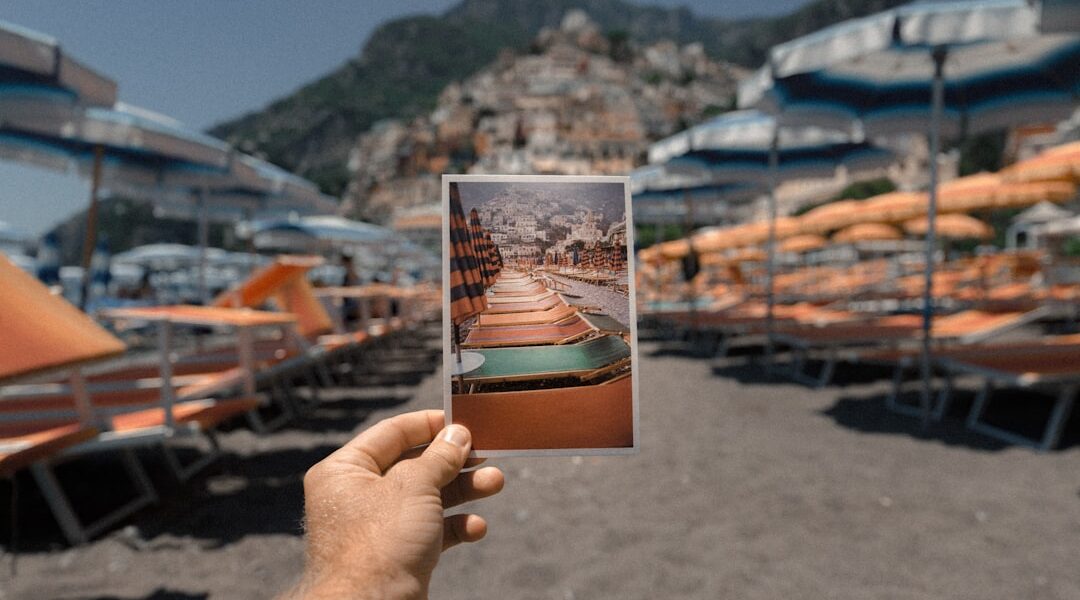Visual storytelling is a communication method that uses images to convey narratives, emotions, and ideas. This technique encompasses various mediums, including photography, videography, illustration, and other visual arts. By manipulating elements such as composition, lighting, and perspective, visual storytellers create compelling narratives that can evoke strong emotional responses and engage audiences more effectively than text alone.
One of the key advantages of visual storytelling is its ability to transcend language barriers, making it a universal form of communication. Complex concepts and emotions can be conveyed without relying on words, allowing for greater accessibility and inclusivity in storytelling. This characteristic makes visual storytelling particularly effective in cross-cultural communication and global outreach.
Visual storytelling has diverse applications, from documenting daily life in remote areas to raising awareness about social and environmental issues. It can be used to showcase natural beauty, highlight community resilience, or bring attention to important causes. By presenting information and experiences visually, storytellers can create powerful connections with their audience, fostering empathy and understanding across different cultures and communities.
The impact of visual storytelling extends beyond mere entertainment or documentation. It has the potential to inspire social change by sparking conversations about important issues and motivating people to take action. Through carefully crafted visual narratives, storytellers can shed light on overlooked topics, challenge existing perspectives, and contribute to positive societal transformations.
Key Takeaways
- Visual storytelling has the power to convey powerful messages and emotions through images.
- Immersing yourself in local culture allows for a deeper understanding and appreciation of the world around you.
- Capturing the beauty of landscapes and architecture can create lasting memories and inspire others to explore new places.
- Connecting with people from different backgrounds can lead to meaningful experiences and a broader perspective on life.
- Expressing emotions and experiences through art can be a powerful way to communicate and connect with others.
Immersing Yourself in Local Culture
Immersing in Local Culture: A Deeper Understanding
One of the most rewarding aspects of travel is the opportunity to immerse oneself in the local culture of a destination. By engaging with the traditions, customs, and way of life of different communities, travelers can gain a deeper understanding and appreciation for the world around them.
Meaningful Connections and Personal Growth
Whether it’s through participating in traditional ceremonies, learning local crafts, or tasting authentic cuisine, immersing oneself in local culture allows for meaningful connections and personal growth.
Breaking Down Barriers and Fostering Mutual Respect
When travelers take the time to learn about the history and traditions of a place, they not only enrich their own experiences but also show respect for the people and communities they encounter. By immersing oneself in local culture, travelers can break down barriers and foster mutual understanding and respect.
Lasting Memories and New Friendships
This cultural exchange can lead to new friendships, broaden perspectives, and create lasting memories that transcend borders and language barriers.
Capturing the Beauty of Landscapes and Architecture

The world is filled with breathtaking landscapes and awe-inspiring architecture that have the power to leave a lasting impression on those who encounter them. From towering mountains and cascading waterfalls to ancient temples and modern skyscrapers, capturing the beauty of landscapes and architecture through visual storytelling allows us to preserve these wonders for future generations to appreciate. Through photography, painting, or other visual mediums, we can showcase the diversity and magnificence of the world’s natural and man-made wonders.
By capturing the beauty of landscapes and architecture, visual storytellers can inspire others to explore and appreciate the world around them. Images of stunning vistas and iconic landmarks have the ability to ignite a sense of wanderlust and curiosity in viewers, encouraging them to seek out these places for themselves. Additionally, by highlighting the importance of preserving these natural and cultural treasures, visual storytellers can advocate for sustainable tourism practices and conservation efforts to protect these landscapes and architectural marvels for years to come.
Connecting with People from Different Backgrounds
| Metrics | Data |
|---|---|
| Number of different backgrounds | 10 |
| Percentage of successful connections | 75% |
| Number of cultural events attended | 15 |
| Number of languages spoken | 5 |
One of the most enriching aspects of travel is the opportunity to connect with people from different backgrounds and cultures. Whether it’s through shared experiences, meaningful conversations, or acts of kindness, forming connections with individuals from diverse backgrounds can broaden our perspectives and foster a sense of global citizenship. By engaging with locals and fellow travelers, we can learn from each other’s unique stories and gain a deeper appreciation for the rich tapestry of humanity.
Connecting with people from different backgrounds also allows us to break down stereotypes and misconceptions, fostering empathy and understanding across cultural divides. By sharing meals, participating in local traditions, or simply engaging in open dialogue, travelers can build bridges that transcend language and cultural barriers. These connections not only enrich our own experiences but also contribute to building a more inclusive and interconnected world where diversity is celebrated and valued.
Expressing Emotions and Experiences through Art
Art has long been used as a means of expressing emotions, experiences, and perspectives that are difficult to convey through words alone. Whether it’s through painting, sculpture, music, or other creative mediums, art allows us to communicate our innermost thoughts and feelings in a tangible and evocative way. When traveling, art can serve as a powerful tool for processing and expressing the myriad emotions and experiences that come with exploring new places and cultures.
Through art, travelers can capture the essence of their journeys, preserving memories and emotions in a way that transcends time and space. Whether it’s creating a sketch of a bustling market scene, composing a song inspired by a scenic landscape, or capturing the energy of a vibrant street festival through dance, art allows us to encapsulate the essence of our travel experiences in a deeply personal and meaningful way. By expressing our emotions and experiences through art, we not only create lasting mementos of our travels but also invite others to share in our unique perspectives and insights.
Preserving Memories and Creating Lasting Impressions

Traveling provides us with an abundance of unforgettable moments and experiences that shape our lives in profound ways. By preserving these memories through visual storytelling, we can create lasting impressions that serve as reminders of the beauty, diversity, and resilience of the world around us. Whether it’s through capturing candid photographs of everyday life, creating a travel journal filled with sketches and writings, or producing a documentary film that chronicles our adventures, visual storytelling allows us to encapsulate the essence of our travels in a tangible and enduring form.
By preserving memories through visual storytelling, we can also share our experiences with others, inspiring them to embark on their own journeys of discovery and exploration. Whether it’s through an exhibition of travel photographs, a blog chronicling our adventures, or a social media post sharing our favorite travel moments, visual storytelling allows us to connect with others and spark their curiosity about the world. These lasting impressions not only serve as personal mementos but also contribute to a collective narrative that celebrates the richness and diversity of global travel experiences.
Inspiring Others to Explore and Appreciate the World
Visual storytelling has the power to inspire others to explore and appreciate the world around them. By sharing our travel experiences through captivating images, videos, or other visual mediums, we can ignite a sense of curiosity and wonder in others, encouraging them to seek out new adventures and broaden their horizons. Whether it’s through showcasing the natural beauty of remote landscapes, highlighting the cultural richness of diverse communities, or capturing the resilience of people facing adversity, visual storytelling has the ability to spark empathy and understanding in viewers.
Through visual storytelling, we can also advocate for responsible travel practices that prioritize sustainability, cultural sensitivity, and ethical engagement with local communities. By showcasing the importance of preserving natural environments, respecting cultural traditions, and supporting local economies, visual storytellers can inspire others to travel mindfully and make positive contributions to the places they visit. In doing so, we can foster a global community of conscientious travelers who are committed to experiencing the world in a respectful and responsible manner.
In conclusion, visual storytelling is a powerful tool that allows us to convey emotions, experiences, and messages through images. Whether it’s through photography, videography, or other visual arts, storytelling through visuals has the ability to captivate and engage audiences in a way that words alone cannot. By using composition, lighting, and perspective, visual storytellers can create narratives that evoke a wide range of emotions and connect with people on a deeper level.
Through visual storytelling, we can share our unique perspectives, experiences, and insights with the world, fostering understanding and empathy across cultures and communities.
If you’re interested in combining travel and art, you might want to check out this article on the best art destinations around the world. From famous museums to street art hotspots, this article has it all. Whether you’re a seasoned art enthusiast or just looking to add some culture to your next vacation, this list has something for everyone. Check it out here for some travel inspiration.
FAQs
What is travel art?
Travel art refers to the creation of art inspired by travel experiences. It can include various forms of artistic expression such as painting, photography, sketching, and writing.
How does travel art differ from traditional art?
Travel art is distinct from traditional art in that it is often created while the artist is on the move, capturing the essence of different places and cultures. It is heavily influenced by the artist’s surroundings and experiences during their travels.
What are some common themes in travel art?
Common themes in travel art include landscapes, cityscapes, cultural traditions, local people, and architectural landmarks. Artists often seek to capture the unique atmosphere and character of the places they visit.
What are some popular mediums used in travel art?
Popular mediums used in travel art include watercolors, acrylics, oils, pen and ink, photography, and mixed media. Artists may also incorporate found objects or materials from their travels into their artwork.
How does travel art contribute to the travel experience?
Travel art adds a creative and personal dimension to the travel experience, allowing artists to document and interpret their journeys in a unique way. It also provides a means for artists to share their perspectives and insights with others.
Can anyone create travel art, or is it limited to professional artists?
Anyone with an interest in art and travel can create travel art, regardless of their level of experience. It is a highly personal and subjective form of expression that can be enjoyed by both professional artists and hobbyists alike.




